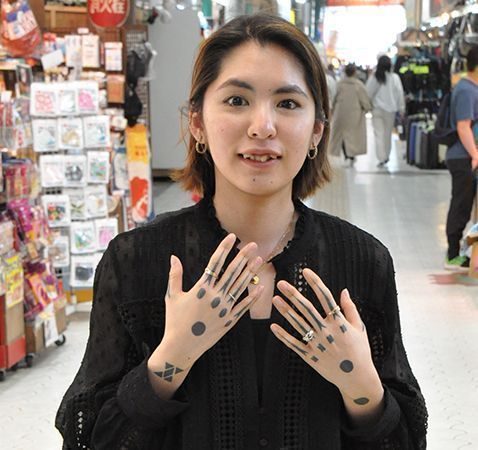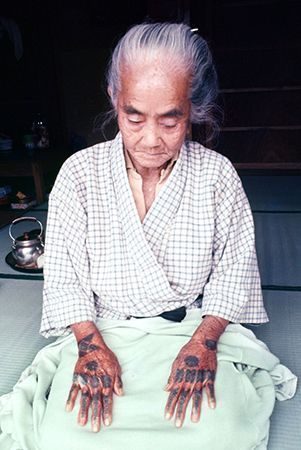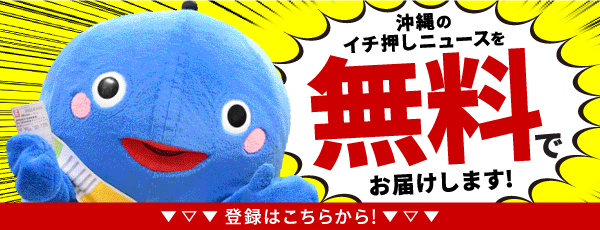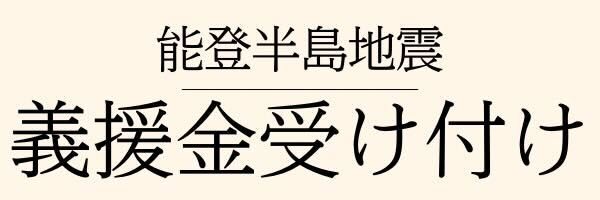
Hajichi, a Ryukyuan tattoo, was once banned and even called "bad manners,". However, they blend in surprisingly well in daily scenes when young people wear them. Moeko Heshiki (29) is a Hajichaa (Ryukyuan tattoo artist) active in Tokyo with her roots in Naha, Okinawa. Lately, she receives work offers from Okinawa and is reimporting Hajich to Okinawa, which also helps her to expand her field as a hajichaa. “I think Hajichi is something tangible that is connected to my roots in Okinawa and I want to preserve it”, she says. She is trying to revive Hajichi, which is believed to have disappeared with her own hands.
Ryukyushimpo Multilingual NEWS
”You look like an Okinawan”, "Are you mixed?” Born and raised in Utsunomiya City in Tochigi Prefecture, people told things like that to Ms. Heshiki things since she was little. It was perhaps her unfamiliar surname or appearance that made people think like that.It was not her own choice but rather those words that made her strongly aware of her "Uchinanchu" identity.
Ms. Heshiki first encountered Hajichi when she was 24 years old and a graduate student at Tama Art University, majoring in oil painting. She searched for a tattoo related to Okinawa on an image-sharing site, and came across an image of Hajichi. “Although the entrance was usual, I became more and more attracted to the idea of "getting a hajichi" as a connection to my own identity”

After about a year, she found a special feature on Hajichi on a culture magazine "STUDIO VOICE" with a name of Hajichaa. His name was Mr. Taku Oshima, who has been working as a tribal tattoo artist. Ms. Heshiki immediately visited the store and had a hajichi tattooed on her right wrist. The pattern is called "ichichi-bushi (five stars)", which is meant to be "a promise to go to paradise after death”.
Ms.Heshiki learned from her father that her great-grandmother also had a hajichi. According to her father, she could only speak in Uchinaa-guchi and used to puff on her kissel. Although Ms. Heshiki never met her in person, she admires great-grandmother who is said to be strict but kind. ”She was cool as an Uchinaa woman," she said and proudly gazed at her first hajichi on her right hand. (Ryota Nakamura)
(Translated with DeepL Translator, Edited by Kyoko Ishii)
Click here to read the original article in Japanese
▼Worldwide Uchinanchu News/Noticias de Uchinanchu en el mundo



